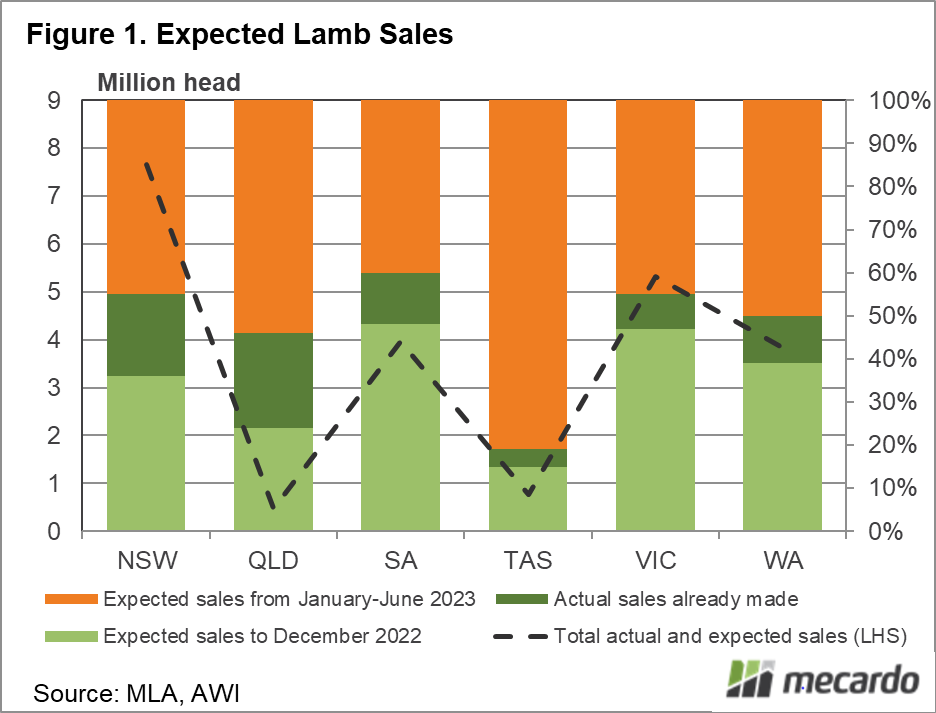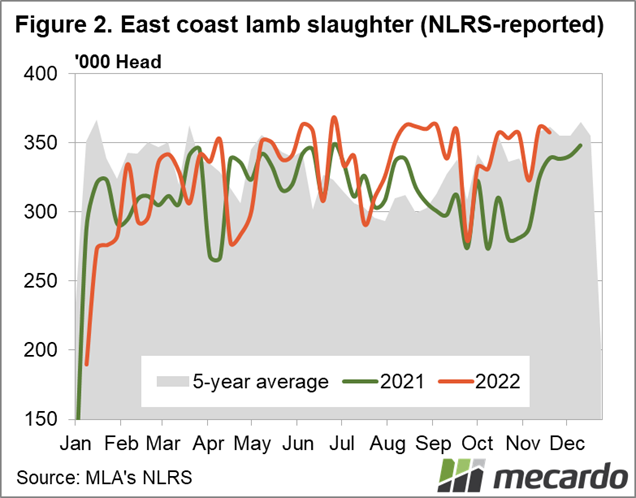The volume of lambs left to go through the system has been highlighted in the latest Sheep Producers Intentions Survey. It shows that nearly half of the lambs on hand as of October are expected to be sold in the first half of 2023, with just 13% already offloaded when the survey was conducted. That’s 19 million lambs to be sold between November 2022 and June 2023.
The Meat and Livestock Australia and Australian Wool Innovation survey is put out three times a year, with the results from the October edition recently released. The survey has been rejigged this time around, and the results include some additional information which will give producers good insight – especially into the future when we are able to compare previous years.
What we can directly compare year-on-year is the number of lambs marked in the previous four months, which increased significantly year-on-year for the period, up 10% compared to the October 2021 survey. The number of ewes joined to produce those lambs unsurprisingly also rose, up from 21.6 million head to 24.5 million head. Lambs on hand however actually decreased year-on-year, from 29.3 million to 26.78 million. However it would seem previous surveys accounted for all lambs, where the new format eliminates lambs intended to be retained as breeding ewes.
One of the other new elements of the survey was producers indicating what period they expect to turn off their lambs, when previously the survey only asked what the expected lamb sales were for the next four months (November through February). In the 2021 October survey, producers intended to offload 44% of the lambs on hand in the November-February period, which equalled 13.1 million lambs. This year, producers intended to offload 41% of lambs on hand in November-December, which was 8.9 million lambs, and 46% from January to June 2023, which is 10.1 million lambs.
What does it mean?
While slaughter doesn’t account for all lambs sold, it does give us an indication of those going through the system. If we look at the lambs intended to be offloaded between November this year and June next year, it equates to 19 million head. Total lamb slaughter for the same period, in 2021-22 was roughly 13.8 million. This would indicate that given the expected strong influx of supply, it’s unlikely that there will be much upward movement in lamb prices happening.
The new survey format also gives a longer term overview of flock size and intentions – more on this to come.
Have any questions or comments?
Key Points
- Latest Sheep Producers Intentions Survey shows nearly half the lambs on hand are set to be held over until the new year.
- Producers marked 10% more lambs leading into spring this year, from 12% more ewes joined.
- When comparing lamb sale intention and previous slaughter, supply likely to be higher year-on-year come the first half of 2023.
Click on figure to expand
Data sources: MLA, AWI, Intuitive Solutions.
Photo Credit: Graeme Stweart ” Barbers Road, Walla Walla”














